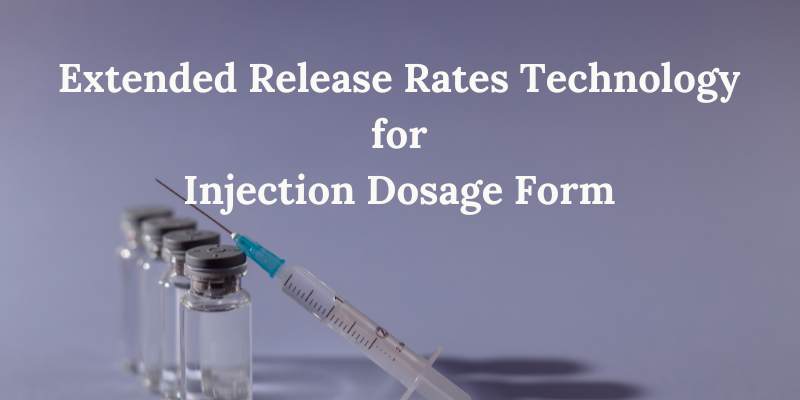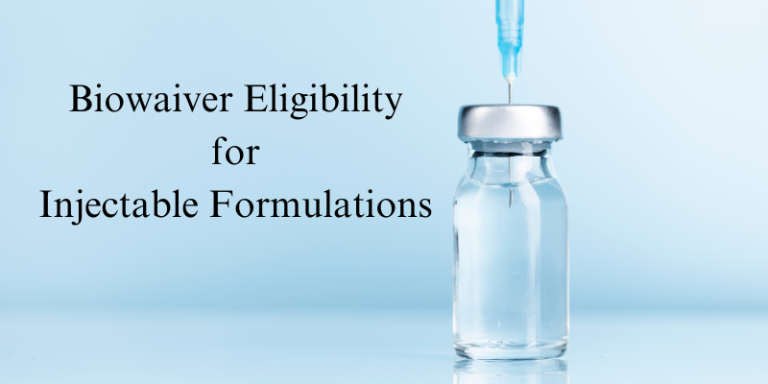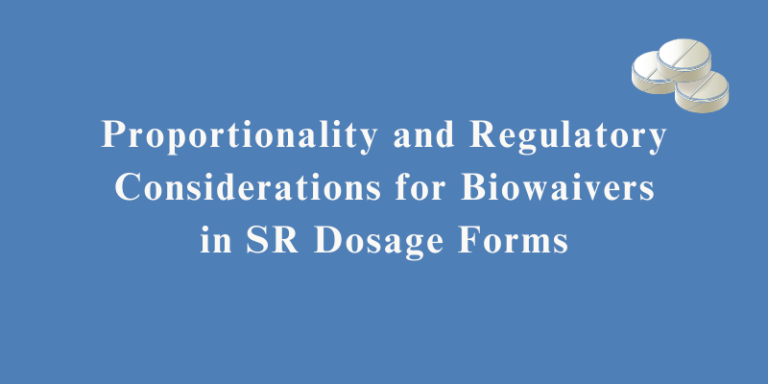Extended Release Rates Technology for Injection Dosage Form
Extended-release injectable formulations are designed to release the active pharmaceutical ingredient (API) at a controlled rate over an extended period, from several hours to weeks. The primary goal of these formulations is to reduce the frequency of administration, minimize drug fluctuations, and maintain therapeutic drug levels, improving patient adherence and clinical efficacy.
The development of injection dosage forms with extended release (ER) properties has gained significant attention due to their ability to maintain therapeutic drug concentrations over prolonged periods, improving patient compliance and treatment outcomes. Extended-release formulations for injectables have been widely researched for the delivery of various drugs, including small molecules and biologics. This review provides an overview of the technologies, mechanisms, and challenges associated with extended-release injectable dosage forms, along with relevant examples and references.
Types of Extended Release Injectable Technologies Depot Systems
Depot injectable systems, such as oil-based formulations, are commonly used for extended-release delivery. These systems often involve a suspension of the drug in a lipid or polymeric matrix, which slowly releases the API over time. Poly(lactic-co-glycolic acid) (PLGA) microspheres, for example, are extensively used for long-term drug release, such as in the case of HIV treatment with depot formulations of cabotegravir.
Example:
PLGA Microspheres for Long-Term Drug Release
As the polymer degrades, the microspheres become more porous, allowing for a controlled release of the encapsulated drug over a prolonged period, ranging from weeks to months, depending on the formulation.
Liposome-based Drug Delivery
Liposomes are spherical vesicles composed of lipid bilayers that encapsulate an active pharmaceutical ingredient (API). As one of the most promising technologies for controlled and sustained drug release, liposomes have been widely researched and applied in various fields, particularly in the delivery of poorly soluble drugs, biologics, and therapeutic agents that require targeted delivery. The versatility of liposomes arises from their ability to encapsulate both hydrophilic and hydrophobic compounds and their potential to provide prolonged drug release.
Depending on their composition and structure, liposomes can be classified into different types, such as small unilamellar vesicles (SUVs), large unilamellar vesicles (LUVs), multilamellar vesicles (MLVs), and multi-compartmental vesicles. The choice of liposome type depends on the drug’s properties, release profile, and intended therapeutic application.
Microspheres and Nanoparticles: These solid particles encapsulate the drug within a matrix or by adsorption, enabling slow and sustained release. Various biodegradable polymers like PLGA, polycaprolactone (PCL), and PEG are used in the preparation of these systems, which are effective for both hydrophobic and hydrophilic drugs.
Hydrogels: Hydrogels, especially those made from natural and synthetic polymers, are promising for injectable extended-release systems. These materials swell in the body and gradually release the drug via diffusion and biodegradation. PEG-based hydrogels and chitosan-based systems have been developed for controlled drug release.
Mechanisms of Extended Release
- Diffusion-Controlled Systems: The API is embedded within a matrix or membrane that slowly releases it through diffusion. The release rate is determined by drug solubility and the permeability of the release medium.
- Erosion-Controlled Systems: These systems gradually degrade in the body, releasing the drug as the matrix or polymer erodes. Biodegradable polymers like PLGA are often used in this method.
- Osmotic Systems: Osmotic pressure is utilized to push the drug out of the delivery system, and the release rate is determined by the amount of osmotic agent and membrane characteristics.
- pH-Dependent Release: Some extended-release systems exploit pH variations in the body to control drug release. Excipients can be added to adjust the release rate based on the pH conditions in the gastrointestinal tract or tissues.
Benefits of Extended Release Injectables
The advantages of extended-release injectables include:
- Reduced Frequency of Administration: Prolonged drug release reduces the need for frequent injections, enhancing patient convenience.
- Stable Therapeutic Drug Levels: These formulations help maintain drug concentrations within the therapeutic range, minimizing fluctuations.
- Improved Patient Adherence: Fewer injections improve compliance, particularly for patients with chronic conditions.
- Enhanced Efficacy and Safety: By reducing drug fluctuations, extended-release systems improve therapeutic efficacy and minimize side effects.
Challenges in Developing Extended Release Injectable Dosage Forms
While extended-release injectables have significant advantages, they face challenges:
- Formulation Complexity: Developing a formulation that ensures consistent drug release is complex, requiring careful balance of drug solubility, excipient selection, and polymer degradation rates.
- Patient-Specific Variables: Variations in patient physiology, such as metabolic rate and tissue absorption, may influence drug release profiles.
- Regulatory Considerations: Regulatory bodies like the FDA and EMA require extensive testing to ensure the safety, efficacy, and stability of extended-release injectables.
- Cost and Manufacturing: The production of these formulations requires specialized equipment and advanced manufacturing processes, raising the cost of development.
Recent Developments and Future Directions
Recent advancements in nanotechnology and biotechnology have further refined extended-release injectables. Nanoparticles and precision delivery systems are enabling more targeted and efficient drug delivery. Additionally, the development of long-acting biologics, such as monoclonal antibodies and peptide therapeutics, is gaining momentum, offering extended-release solutions for these complex molecules.
Conclusion
Extended-release injection dosage forms offer a promising solution for improving patient outcomes by maintaining controlled, sustained drug release. Despite the challenges in formulation, manufacturing, and patient variability, these systems have demonstrated their potential to enhance patient adherence and therapeutic efficacy. With ongoing advancements in drug delivery technology, extended-release injectables are expected to play an increasingly important role in the treatment of chronic diseases, cancer, and various other therapeutic areas.
Read also:
- Critical Processing Parameters in the Fabrication of PLGA Microparticles
- Hydrophilic and Hydrophobic Properties of Drug Substance
- Product Quality Tests for Injections and Implanted Drug Products
References
- Choi, H., et al. “Sustained-release depot systems for the delivery of proteins and peptides.” Drug Delivery and Translational Research, 2014.
- Allen, T. M., & Cullis, P. R. “Liposomal drug delivery systems: From concept to clinical applications.” Advanced Drug Delivery Reviews, 2013.
- Ranjan, S., & Shukla, A. K. “Biodegradable microspheres for controlled drug release.” International Journal of Drug Delivery, 2015.
- Lee, K. Y., & Mooney, D. J. “Hydrogels for controlled drug delivery.” Chemical Reviews, 2001.
Resource Person: Mohanned Jallad



